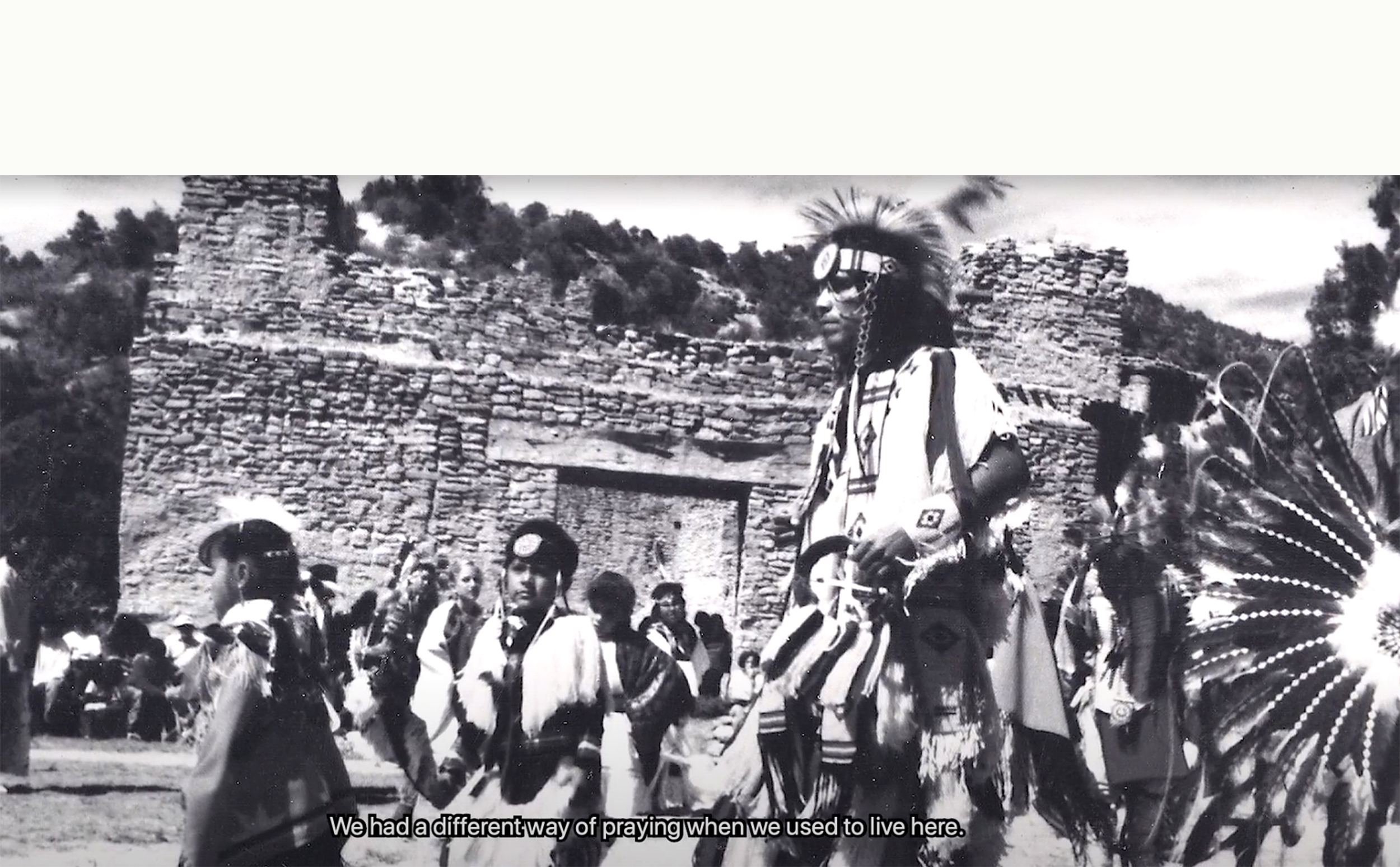July 21, 2020

This archival Jemez Pueblo photograph is part of a video Highlands University media arts students created for the Jemez Historic Site.
Las Vegas, N.M. – New Mexico Highlands University media arts and technology students created an oral history documentary video about the Jemez Pueblo people that was accepted to a New Mexico film festival on Sept. 12, 2020.
The Madrid Film Festival in Madrid, New Mexico, has a mission to encourage local filmmaking by showcasing the best short films produced in New Mexico each year. In 2019, the Highlands University video was part of a redesign the students created for the visitor center at the New Mexico Jemez Historic Site.
“The video is important because it gives a brief history and introduction to the Jemez people,” said Marlon Magdalena, the instruction coordinator at the Jemez Historic Site. “The video also shows visitors that the Jemez language is still being used and spoken. The quality of the video is amazing, giving a unique view of the Jemez history.”
Magdalena, a Jemez tribal member, is the narrator who tells the story of the Jemez people in the video, speaking in the Towa language. The video is available for visitors to view at the Jemez Historic Site. It includes subtitles.
The Jemez Historic Site, known as one of the most beautiful prehistoric and historic sites in the Southwest, includes the stone ruins of a 500-year-old pueblo village and the San José church dating to 1622. The site is a short drive from Albuquerque and Bernalillo, located at Jemez Springs and State Highway 4.
Fifteen media arts students in Highlands one-of-a-kind Program for Interactive Cultural Technology, or PICT, created the multimedia visitor center installation.
Media arts graduate students Jacob Erickson and Terrence García were the team leads for the video. Erickson, a Las Vegas native, was the primary editor. In addition, media arts student Stephen Snyder assisted with filming. Media arts faculty member Eli Gonzales supervised the students’ work.
“The goal of the video was to tell the oral history of the Jemez people, such as where they originated from, their journey into New Mexico, and their life story, all told in the Towa language,” Erickson said. “Some of the shots in the video include drone footage of the Jemez Historic Site and surrounding area, shots of the Spanish mission ruins and Native American ruins surrounding it, and archival black and white photos of the Jemez people.”
Erickson said many of his film projects at Highlands centered around oral history.
“For me to be able to film a Native American origin story in their own language was extremely meaningful to me, especially given the hardships the Jemez people endured to preserve their language and heritage,” Erickson said.
Miriam Langer, department chair for the Highlands Media Arts and Technology Department, also supervised the students for the Jemez Historic Site project along with fellow faculty member Mariah Fox Hausman and Gonzales.
“This video is an excellent example of how the PICT program, in partnership with New Mexico Historic Sites, is changing the traditional narrative of visitor center exhibits,” Langer said. “This video centers around the thriving culture and language of the Jemez Pueblo. Visitors at historic sites are often led to conclude, because they see archeological items on display, that it means there is no contemporary culture. This video makes it clear that is not the case.”
The media arts students’ video is being considered for two categories in the Madrid Film Festival including Best in Genre and Best Film.

